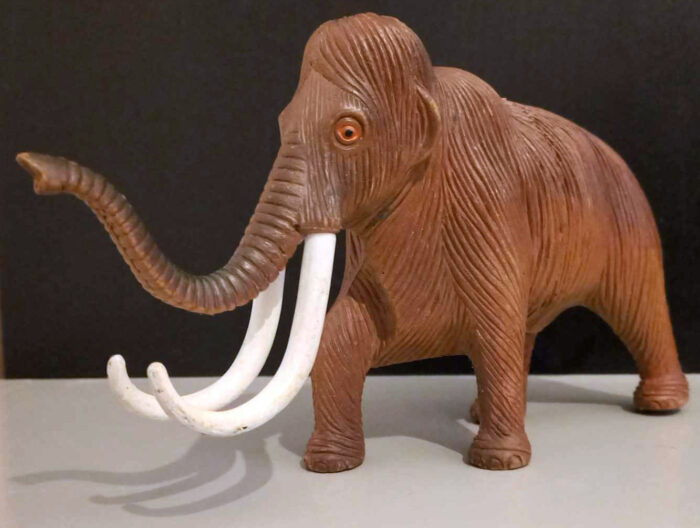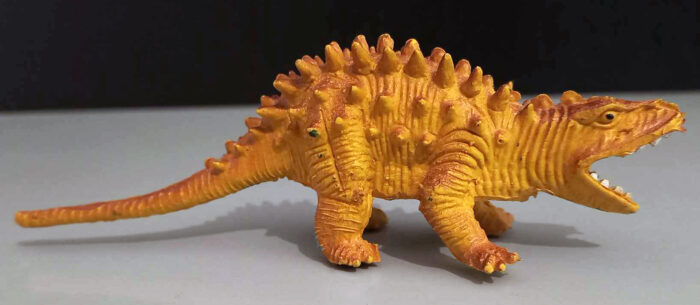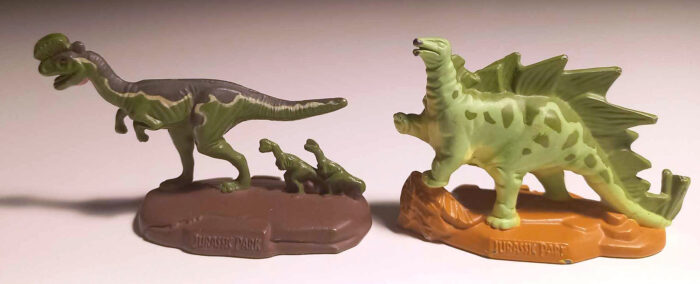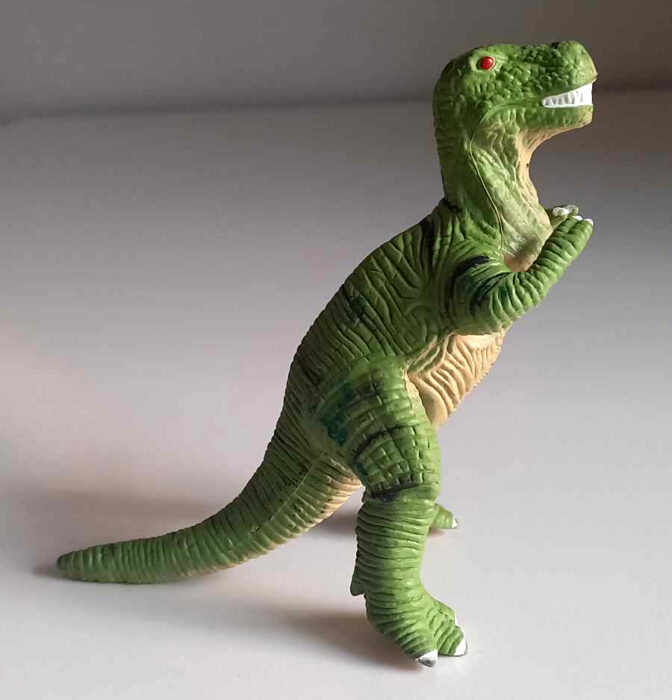A few days ago, the first Columbian mammoth figure was reviewed at the blog, which reminded me how much I love mammoths, so I was inspired to review my oldest mammoth toy; the Dor Mei woolly mammoth. I can’t find much info about it online, other than that it’s supposedly from 1983 and part of a line called “Galaxy Fighters Warriors”, but I have no idea what that means or if it’s even correct.
Author: Funk
All reviews by this author
Review: Velociraptor (The Lost World: Jurassic Park, Site B Erasers by Impact Inc)
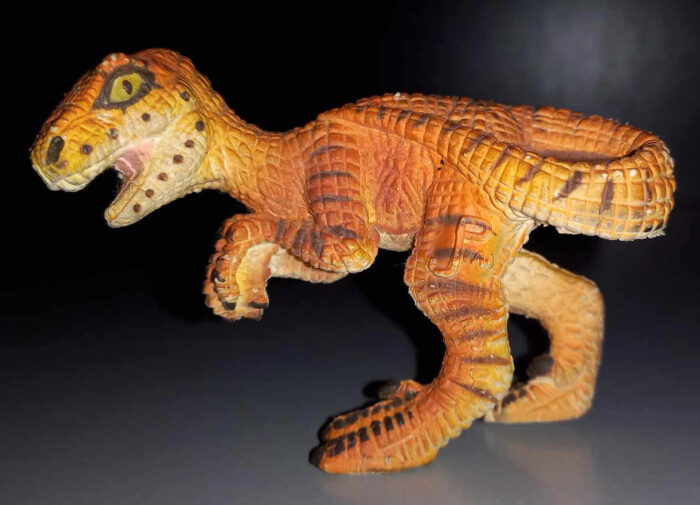
While the merchandise accompanying the release of the various Jurassic Park films ranged between everything from watches to bed-sheets, the most exciting items for me were of course the dinosaur figures. So I was happy to find this cool little Velociraptor figure with a big The Lost World logo on the packaging at a Copenhagen dinosaur exhibition back in 1998, only to find when I opened it that it was… A rubber pencil eraser?!
Review: Palaeoscincus (Imperial)
Review: Tyrannosaurus (Monster In My Pocket by Matchbox, Series 6)
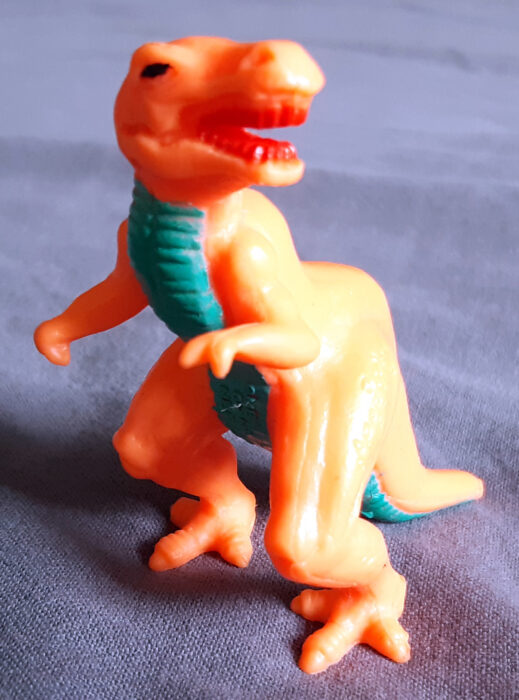
Monster In My Pocket was a toy franchise that released waves of, you guessed it, pocket sized plastic-monsters throughout the 90s. Several of the series included dinosaurs or near-dinosaurs, and some of the later series consisted almost solely of dinosaurs. The figures all seem to have come in at least three colour-variants, and included cards.
Review: Apatosaurus (1992)(UKRD)
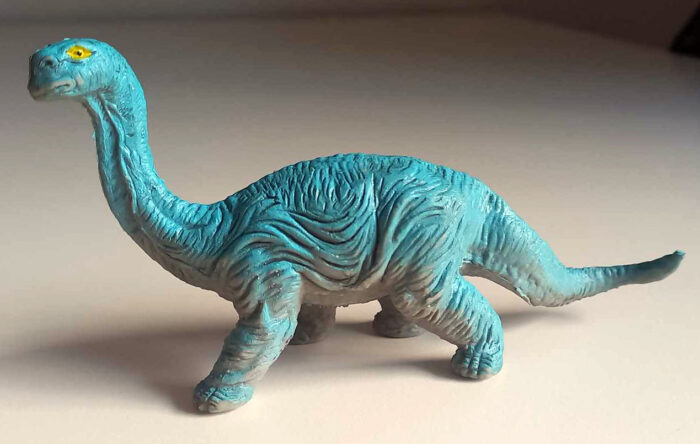
Other reviewers seem to have stopped covering UKRD figures years ago, but there are still a lot of them left to go, so I guess that’s my lot in life. While they may seem like mass-produced dreck to most people, I find them interesting and charming because they often reflect outdated or downright bizarre ideas and vintage palaoart, usually (with some notable exceptions) based on John Sibbick’s paintings from the 1985 book Enyclopaedia of Dinosaurs by David Norman.
Review: Ankylosaurus (Animal World Dinosaurs by Bullyland)
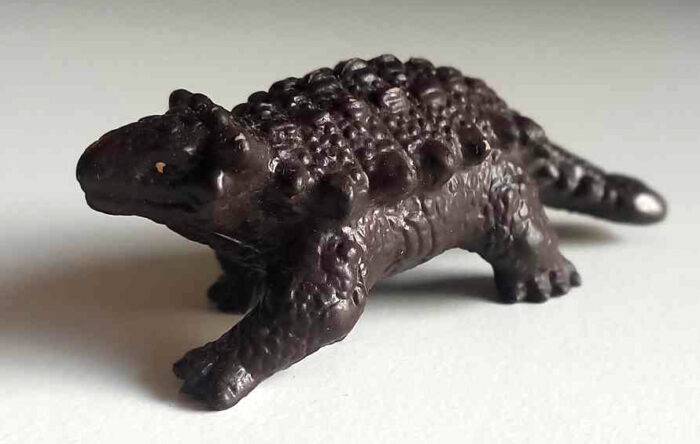
Having been described in 1908 and being the eponymous ankylosaurid, Ankylosaurus has long been a staple of dinosaur toys. Originally known from rather fragmentary material, reconstructions of this dinosaur historically evolved from Stegosaurus-like before the tail-club was known, to the version that was made familiar by Rudolph Zallinger’s 1947 Age of Reptiles mural and the 1964 World’s Fair model, with their nodosaur-like spikes, sprawling limbs, and dragging tail-clubs.
Review: Dilophosaurus and Stegosaurus (die-cast metal dinosaurs)(Jurassic Park by Kenner)
Review: Iguanodon (UKRD)
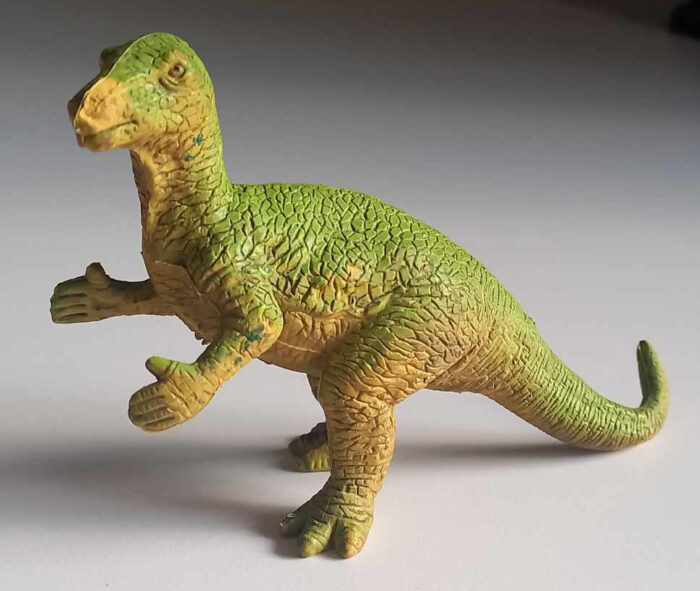
This is my first review as an author rather than guest reviewer at this blog, so I’ll start out with a classic figure, the UKRD Iguanodon from 1992. Iguanodon of course has the distinction of being the second named dinosaur genus (after Megalosaurus), and has remained relatively famous for a non-American dinosaur, even being the protagonist of a film, Disney’s Dinosaur.
Review: Tyrannosaurus rex (Bendable by UKRD)
Review: Triceratops (Animal World Dinosaurs by Bullyland)
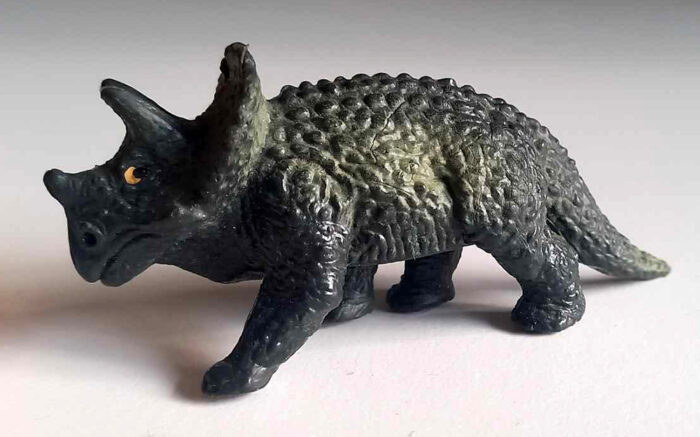
Review and photographs by Funk, edited by Suspsy
This blog is increasingly focused on newer products, which makes sense since the pool of charming retro-dinosaurs to review can only decrease, but there are still notable omissions, so I’ve made it my mission to break the endless combo of Jurassic World toys and hyper realistic figures.
Review: Diablo (Primal Rage by Playmates)
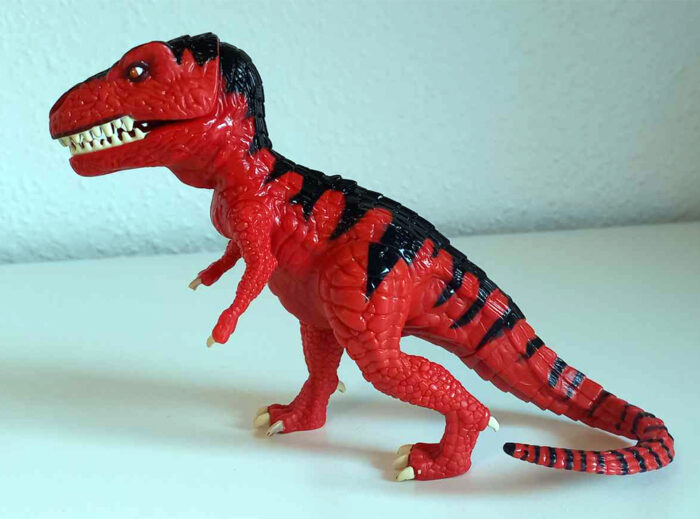
Review and photographs by Funk, edited by Suspsy.
As most dinosaur fans that grew up in the 1990s know, Primal Rage from 1994 was a fighting game pitting stop motion animated dinosaurs and apes against each other, with very violent and sometimes bizarre attacks that inevitably led to parental outrage.
Review: Armadon (Primal Rage by Playmates)
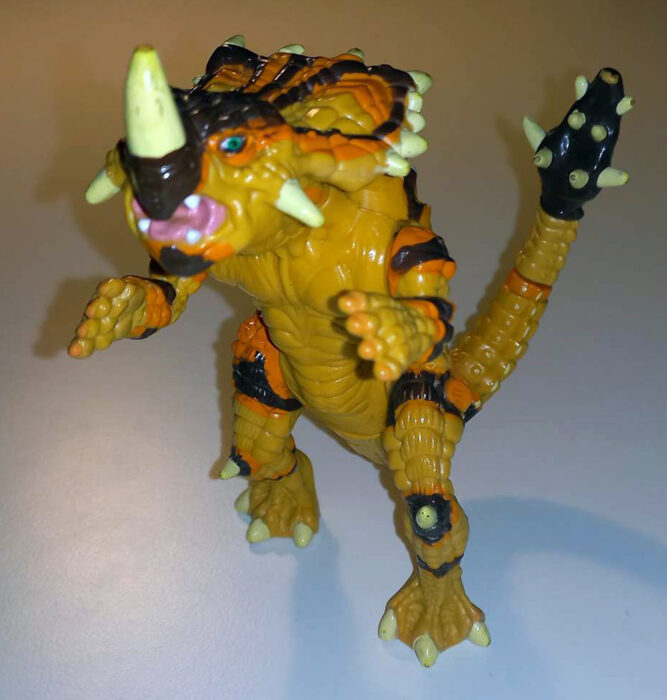
Review and photographs by Funk, edited by Suspsy
The 1994 Atari fighting game Primal Rage featured a roster of stop-motion animated dinosaurs and giant apes that battled it out on a post-apocalyptic Earth (or “Urth”), which seems like an irresistible concept for a toyline, with Playmates jumping to the task in 1996, possibly to coincide with the sequel of the game which never materialised (toys based on characters from the sequel were also produced).

